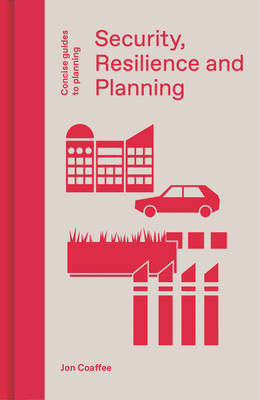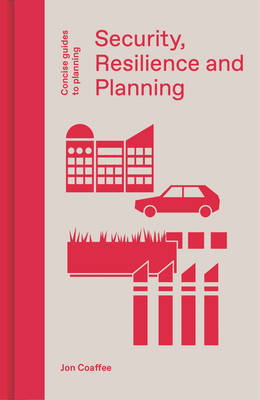
Je cadeautjes zeker op tijd in huis hebben voor de feestdagen? Kom langs in onze winkels en vind het perfecte geschenk!
- Afhalen na 1 uur in een winkel met voorraad
- Gratis thuislevering in België vanaf € 30
- Ruim aanbod met 7 miljoen producten
Je cadeautjes zeker op tijd in huis hebben voor de feestdagen? Kom langs in onze winkels en vind het perfecte geschenk!
- Afhalen na 1 uur in een winkel met voorraad
- Gratis thuislevering in België vanaf € 30
- Ruim aanbod met 7 miljoen producten
Zoeken
€ 56,45
+ 112 punten
Omschrijving
This book offers key concepts and practical guidance about the planner's role in countering terrorist risk. Public safety and security has always been a fundamental premise of successful public spaces, and a material consideration in planning processes, but especially so since the events of 9/11 2001. Recent attacks in Berlin, Nice, Stockholm, London, Melbourne, Barcelona, New York and elsewhere using fast-moving vehicles in crowded places has led to a re-evaluation of security in many public locations. In these uncertain times, planners are increasingly being seen as key stakeholders in national security and counter-terrorism endeavours where the spatial configuration and aesthetic design of protective security interventions will have a crucial impact upon the vibrancy, resilience and safety of urban centres both now and in the future. Illustrated with historic and contemporary international case studies, this book discusses: the changing roles and responsibilities of planning; how security is increasingly becoming a statutory consideration in the planning process; the need for planners to engage with a range of non-traditional stakeholders such as the military, police and security services to facilitate better planning outcomes; the importance of planning in national and global politics; the ethics of planning decision-making and the importance of determining what is in the public interest; how to advance proportionate counter-terrorist security in plans that balance effectiveness with social and cultural factors; and the role of training, guidance, standards and regulation in enforcing or encouraging the fulfilment of planning requirements.
Specificaties
Betrokkenen
- Auteur(s):
- Uitgeverij:
Inhoud
- Aantal bladzijden:
- 160
- Taal:
- Engels
- Reeks:
Eigenschappen
- Productcode (EAN):
- 9781848223356
- Verschijningsdatum:
- 17/04/2020
- Uitvoering:
- Hardcover
- Formaat:
- Genaaid
- Afmetingen:
- 137 mm x 203 mm
- Gewicht:
- 362 g

Alleen bij Standaard Boekhandel
+ 112 punten op je klantenkaart van Standaard Boekhandel
Beoordelingen
We publiceren alleen reviews die voldoen aan de voorwaarden voor reviews. Bekijk onze voorwaarden voor reviews.









